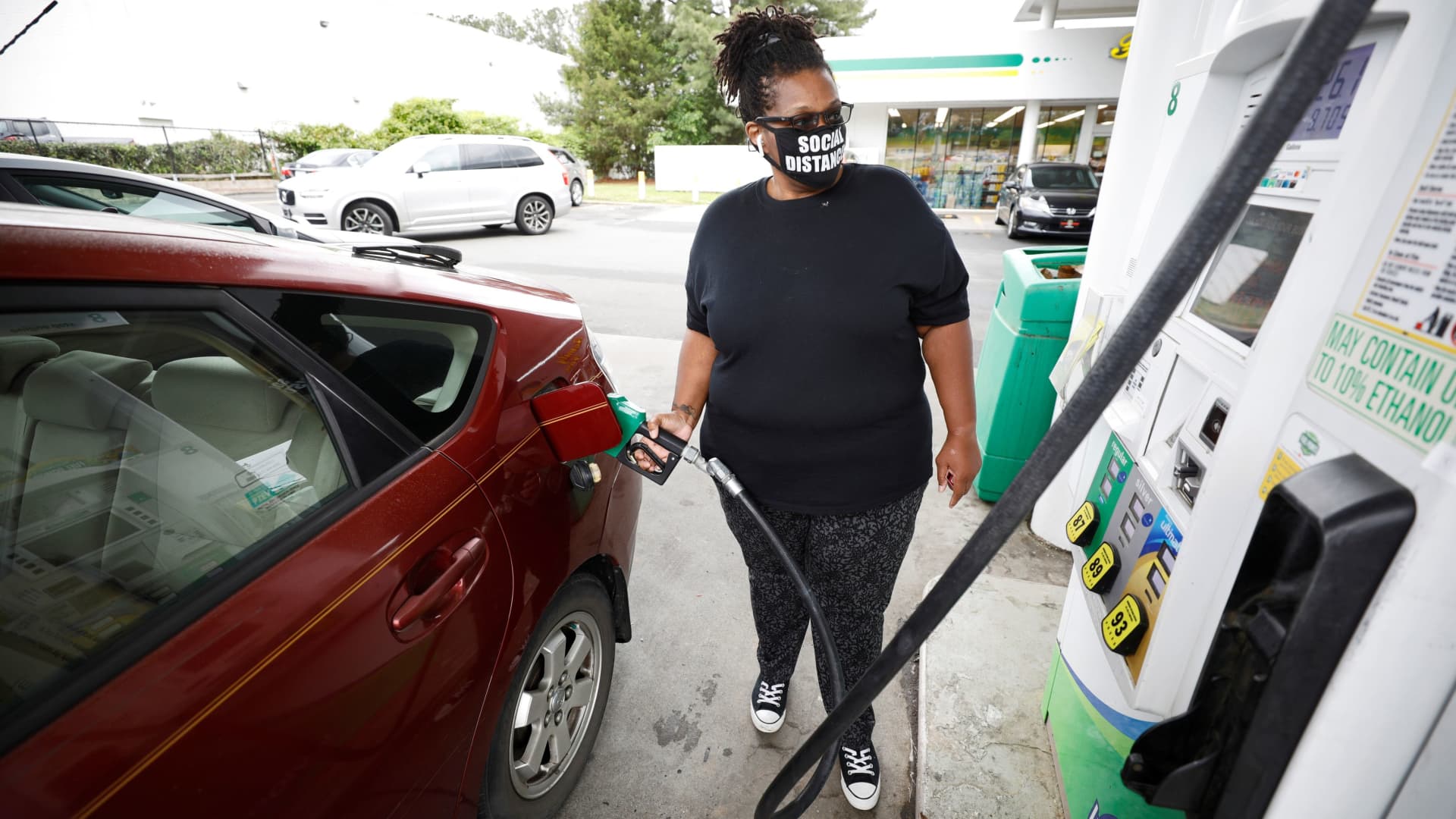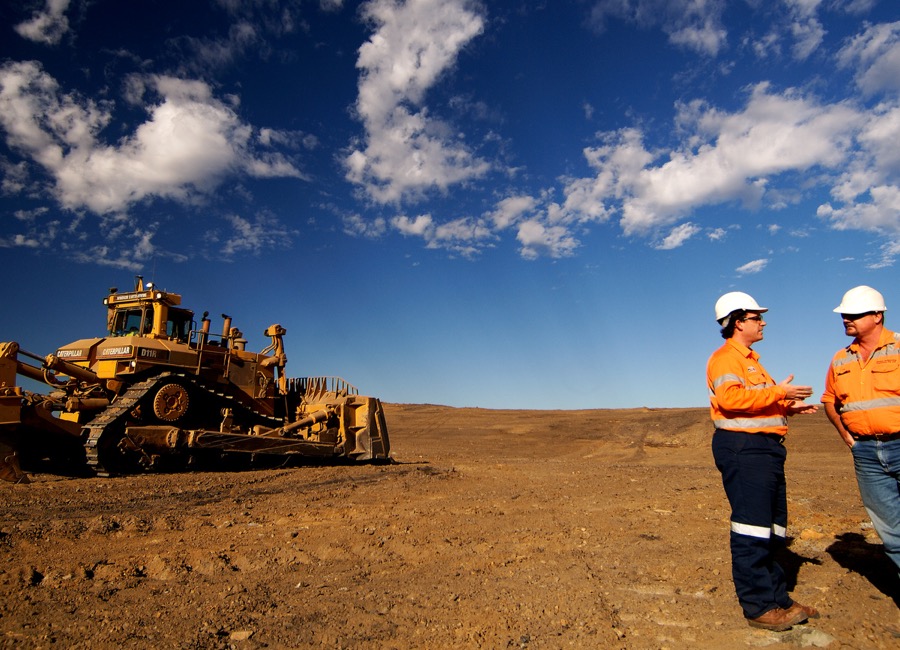Gasoline prices may have peaked for the summer and could be headed below $4


Gasoline prices may have peaked for the summer and are now heading toward $4 per gallon, but all bets are off if there’s a hurricane or other disruption that sends oil prices much higher or crimps fuel supplies.
The national average for unleaded gasoline was $4.467 per gallon Wednesday; prices have steadily declined from a high of $5.01 nationally on June 14, according to AAA. Weekly data on gasoline demand from the Energy Information Administration, or EIA, suggests drivers have cut back on gasoline use, and tight supplies are improving.
“I spoke to three big chain retailers. … They all said of demand in the last three weeks, we’re down 5% or 6% from the same weeks last year,” said Tom Kloza, head of global energy research at OPIS.
“The most common price in the country starts with a ‘3’ handle, $3.99,” he said. That’s the price some big chains are charging in areas with lower gas prices, and analysts say there’s a psychological draw to sub-$4 gasoline.
Prices vary widely across the U.S., with drivers in Georgia, for instance, paying a relatively low $3.98 per gallon, while Californians are paying $5.84 for unleaded, according to AAA.
Clearly, the high prices have hit demand from drivers, but there also may be other factors at work, analysts say.
“I think it’s a combination of Covid and the continuing of work from home,” said Kloza. Concerns about a recession have also kept a lid on oil prices. But Kloza cautions, gasoline prices could surge back to $5 later this year on any number of factors.
For one, Europe is expected to move away from using Russian oil by the end of the year, and analysts are concerned that could put upward pressure on the prices of both crude and fuel.
“If there are no incidents, issues with refineries in terms of breakdowns or hurricane then yes,” gasoline prices will head lower, Kloza said. “Crude oil stocks are about 152 million barrels behind last year. You could see crude prices take off, or maybe not. I don’t regard this as a coast is clear, but you’ll get plenty of people who do.”
Not since the 1970s have consumers been hammered with climbing energy prices at the same time prices for other goods and services have risen sharply. Energy inflation accounted for nearly half the 9.1% rise in June’s consumer price index.
“With these higher prices across the board, people are being hit left, right and center. Discretionary driving has just been tabled for now,” said John Kilduff, partner with Again Capital.
Oil prices are a big factor in gasoline prices, and crude has crept back up lately after West Texas Intermediate crude fell into the low $90s per barrel this month. WTI futures were at $103.45 per barrel Wednesday afternoon, down about 0.7%, on the weekly report of lower gasoline demand.
According to the EIA, gasoline demand was 8.5 million barrels per day last week, up from 8.1 million barrels the week before. Meanwhile, the four-week average was 8.7 million barrels per day, off from 9.3 million barrels a year earlier. Kilduff said prior to Covid, demand would have been 9.5 million barrels a day or more at this time of year.
Analysts initially questioned the report showing such low demand during the Independence Day week and credited it to possible difficulties around gathering data during the holiday period.
“It’s falling two weeks in a row. It’s starting to look like a reliable trend,” said Kilduff.
Patrick DeHaan, head of petroleum analysis at Gas Buddy, notes gasoline inventories have also been rebounding. According to EIA, gasoline inventories grew by 3.5 million barrels last week to a total of 228.4 million barrels.
“We’re still a bit tighter on supply than I’d like to be going into hurricane season, but we’ve seen gasoline inventories now build four of the last five weeks, ” DeHaan said. He said that should push down RBOB gasoline futures, which represent the anticipated price of gasoline in New York Harbor.
RBOB futures were 0.7% lower Wednesday afternoon, trading at about $3.28 per gallon.
“I still think it’s a possibility we get to $3.99 nationally [by mid-August],” said DeHaan. “It certainly can get derailed by unexpected shutdowns, better-than-expected economic data and hurricanes.”
DeHaan said the worry is that a strong hurricane hits Gulf Coast production and the refining hubs of Texas and Louisiana. Refineries have been running at high capacity, though utilization dipped to 93.7% in the past week, off 1.2 percentage points.
DeHaan said the lower demand may be somewhat of an anomaly, and he speculated they could be caused by gasoline stations holding off on orders, waiting for even lower prices.
“I think Labor Day could end up being the cheapest summer holiday at the pump,” said DeHaan. “We can have expectations for what shows up for economic data, but we have no expectations of what turns up in the Atlantic or tropics. The wild card this year is hurricane season. … If we get a Harvey or an Ida that shuts down oil and gas production, we could go right back to record levels. We’re not in the clear.”
In late May, JPMorgan predicted gasoline could reach as high as $6.20 a gallon by the end of the summer.
This post has been syndicated from a third-party source. View the original article here.




